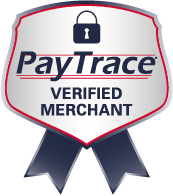How to Use Newsjacking in Marketing
“Newsjacking” combines “news” + “hijacking” into a new marketing term. Newsjacking means leveraging the power of a breaking news story to gain attention for your company or your brand. The term received a lot of attention in 2011 with the publication of David Meerman Scott’s book, “Newsjacking: How to Inject your Ideas into a Breaking News Story and Generate Tons of Media Coverage” but the practice has been around for years. While it’s associated primarily with digital marketing today, it’s not hard to find examples on TV and other media.
Does Newsjacking Work?
There’s little doubt that newsjacking works for a lot of marketers. MarketingLand interviewed Chris Kerns, author of Trendology, who provides data that proves that newsjacking can be an effective way to get attention from the media, online publishers, and of course, the public.
In fact, here are some stats that support the idea of newsjacking using Twitter:
- Brands that tweeted about unexpected news events saw an average 1,200 percent increase in retweets from their Twitter followers.
- Brands that tweeted about major and expected events still saw an average of a 400 percent increase in retweets.
The above numbers show that an opportunistic use of dramatic and breaking news can be effective. But even newsjacking of planned events like the Superbowl or the Academy Awards works well and is certainly a safer bet for most marketers. By using relevant news about your own industry, you can build credibility by demonstrating that you stay on top of events that are likely to interest your customers and prospects.
When Newsjacking Backfires
While it’s exciting to benefit from powerful news stories, marketers need to be aware of companies that earned negative attention for unintentionally offending their customers and prospects. A good example is SpaghettiOs attempt to newsjack attention on Pearl Harbor Day, usually considered a tragic event in American history. You really need to think about how people perceive the topic you are newsjacking. The company did gain attention, but most of it was negative.
How Does Newsjacking Work?
Most marketers only use stories that are obviously relevant to their own business. Even the marketing software company, HubSpot admits to using recent Google algorithm updates as content for their blog posts because they know their audience has an interest in why their website’s rankings go up or down overnight when Google makes changes. This approach helps maintain HubSpot as a credible source for industry news.
Some marketers can creatively weave seemingly unrelated news stories into their own social posts and content. For example, Ben & Jerry’s capitalized on marijuana legalization in Colorado by posting a tweet that humorously asked if supplies of their ice cream were running low here. This is risky, and the company’s marketers really know their audience. Still, these quick piggybacks of trending and sometimes controversial topics can offer great returns when they work.
Get Help to Newsjack Right
Marketers use a variety of tools and services to help them catch news stories that they can use for their content and social posts. You might consider using HubSpot’s social monitoring app for alerts about news within certain topics. Google and Twitter also offer lots of information about trending topics and hashtags.
Done right, newsjacking can rapidly help marketers and their brands gain attention, website traffic, and even leads and sales. However, the practice of newsjacking isn’t without some risk. Contact us here at DBC Digital for digital marketing guidance, so all of your news is good news.



